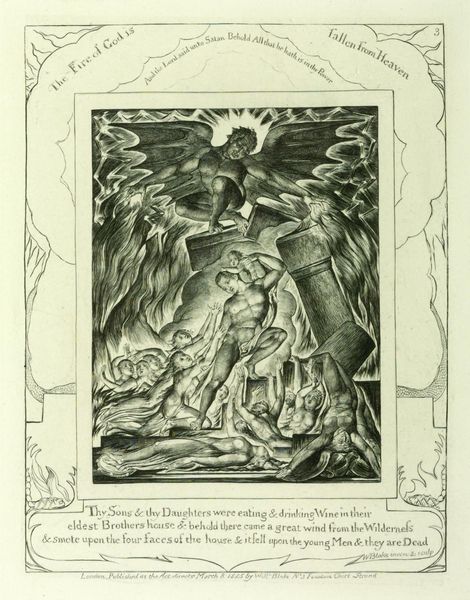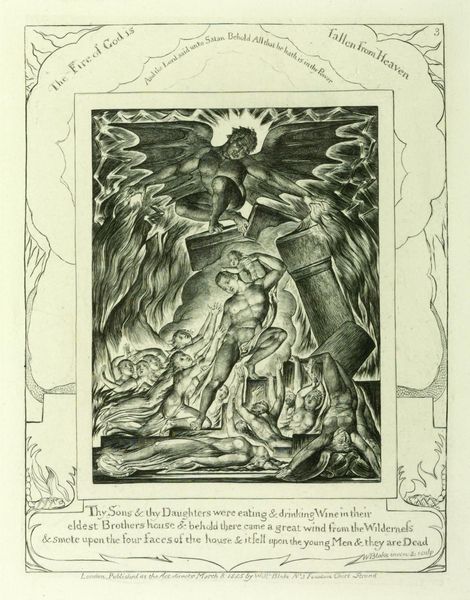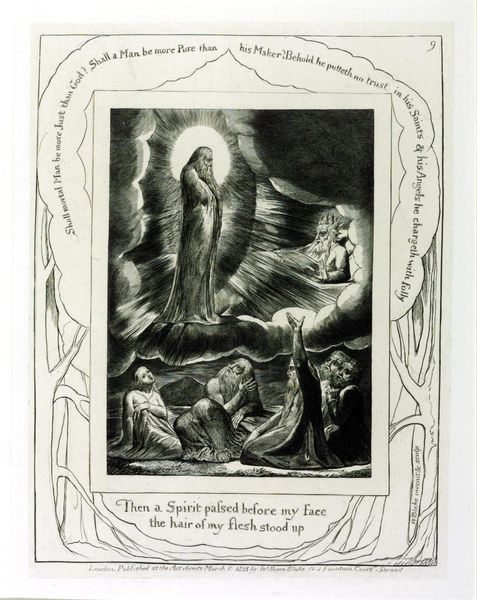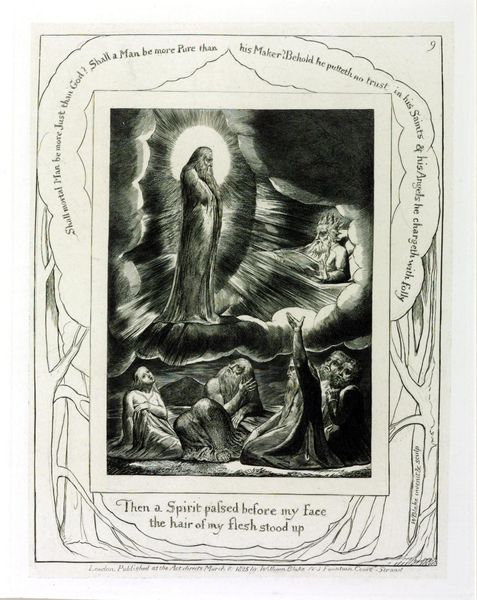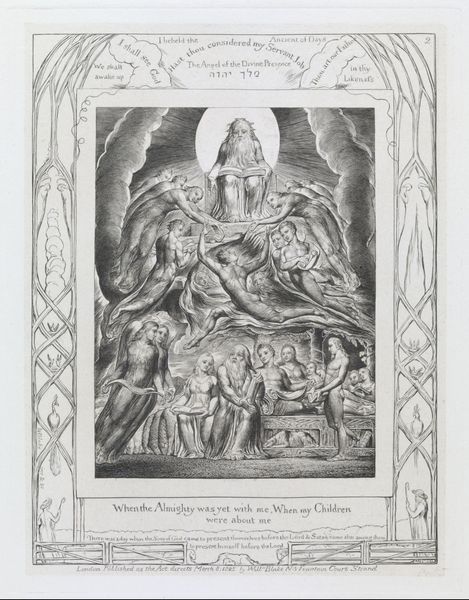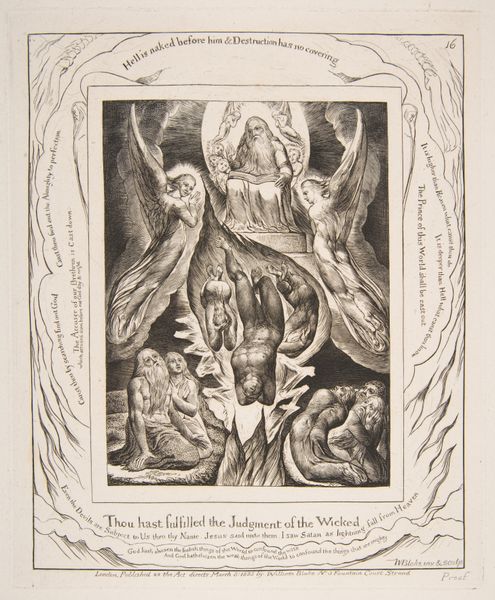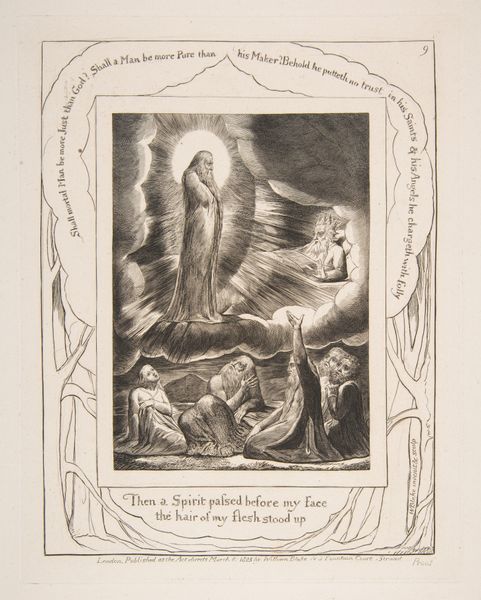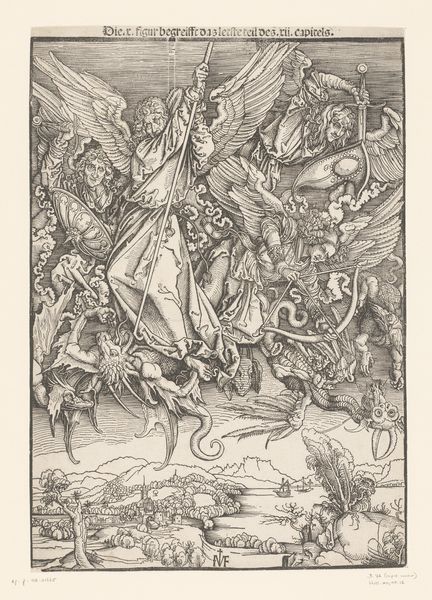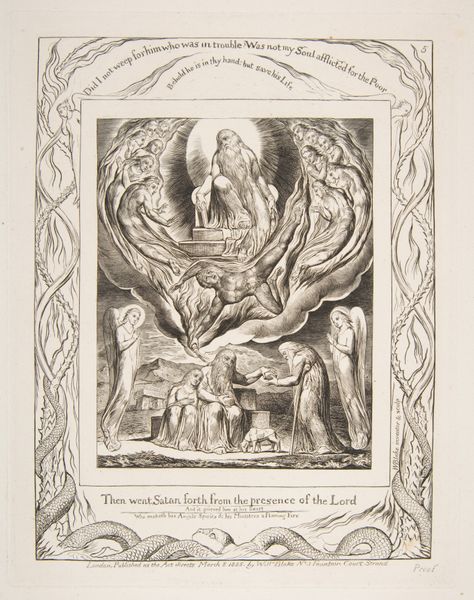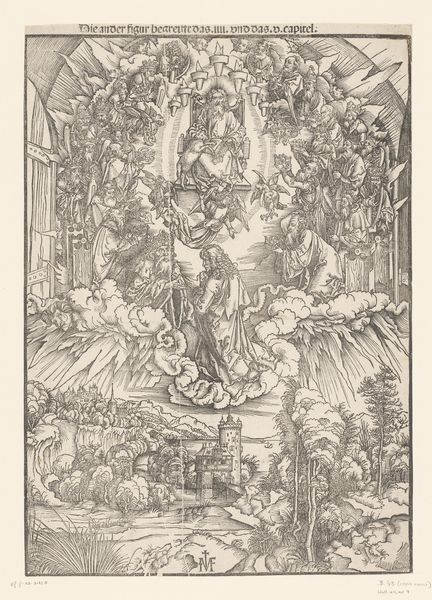
drawing, print, ink, engraving
#
drawing
#
ink drawing
#
narrative-art
# print
#
figuration
#
ink
#
romanticism
#
history-painting
#
engraving
Dimensions: plate: 8 1/2 x 6 5/8 in. (21.6 x 16.8 cm) sheet: 16 3/16 x 10 11/16 in. (41.1 x 27.1 cm)
Copyright: Public Domain
Editor: Here we have William Blake's "The Destruction of Job's Sons," an engraving from 1825-1826. The scene is chaotic, and the figures are so dynamic, even in their demise. What do you see in this piece beyond the immediate drama? Curator: It’s critical to consider Blake's radical vision and his social critique. He wasn't simply illustrating a biblical story; he was interrogating power. Notice how the figures are rendered – muscular, yet caught in a moment of helplessness. How might we interpret this depiction in the context of 19th-century class structures and industrialization? Editor: You mean, beyond the religious story itself, could he be commenting on the vulnerability of people against powerful forces? Curator: Precisely. The destruction can be seen as a metaphor for the oppressive systems that decimate individuals. Blake was deeply critical of the Church and the State. Consider also the figure of Satan in the upper part of the composition. What feelings do you experience in looking at it? Does he look villainous, triumphant or neither? Editor: He doesn't look conventionally evil. He's powerful, yes, but his expression is more…complex, perhaps even tortured? Is Blake questioning the traditional narratives of good and evil here? Curator: Absolutely. Blake often inverted established moral frameworks. Satan, in his works, often embodies a kind of rebellious energy, a defiance against dogma. So, this isn’t just about destruction; it's about questioning the very source of that destruction and, ultimately, resisting oppressive narratives. Editor: That’s fascinating. So, by understanding the social context, we can see the artwork as not only a historical representation but also a radical statement of protest. Thank you! Curator: And by engaging with the complexities within the frame we, too, begin questioning accepted norms. Art can become a real means of political and cultural emancipation.
Comments
No comments
Be the first to comment and join the conversation on the ultimate creative platform.
